Email automation workflows: Understanding the how and the why

As your email list grows, sending relevant messages to every subscriber becomes a challenge.
Not only that, but you need to send emails out in a timely manner so subscribers don’t lose interest in your brand.
If your email list is still in the early stages, it’s easy to send out messages manually. But once you’ve built your list, know that your emails will be far more time consuming.
That’s why email automation workflows come in handy.
What are email automation workflows and why do they work
If your subscriber list has reached the behemoth level, then you already know about email automation.
Some of you might not be there yet. So, here’s what automation is.
Email automation workflows are a series of emails that send when triggered — these triggers are based on a subscriber’s data — like their behavior, or their place in the customer lifecycle.
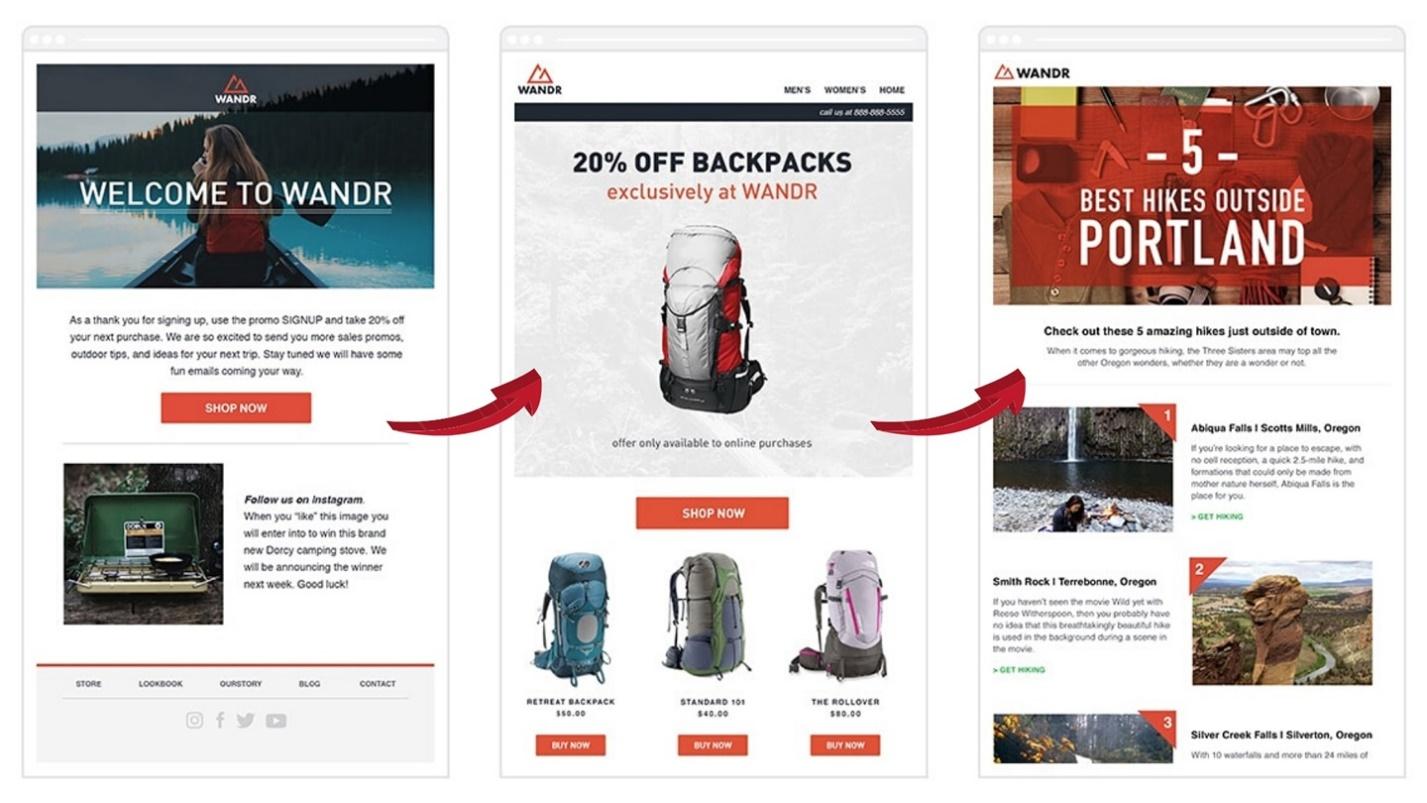
Source: Emma
Email automation workflows succeed for several reasons: Not only does it help simplify your day-to-day processes, but it ensures you’re sending relevant content.
Once you’ve set up, defined, and activated your workflows, your job is done. Your software will do all the work when your subscribers trigger the campaign.
Email automation workflow best practices
If you’ve dabbled in email automation workflows before, you know it’s not simple. You won’t be able to create a welcome campaign and then call it a day. Several best practices need to come into play.
Each best practice is intended to help you design your workflows based on your subscriber’s needs — not your own.
Practice proper email list hygiene
Email list hygiene is huge. It’s important not to send content to inactive subscribers. Remember: Someone may have entered their email address in your form, but that doesn’t mean it’s active.
Make sure your list is up to date, clean of inactive subscribers, and clear of people who don’t want messages from you.
Most individuals have no problem unsubscribing from a list. Others will simply go inactive. Instead of waiting for them to mark your messages as spam, send them an email asking if they wish to be removed.
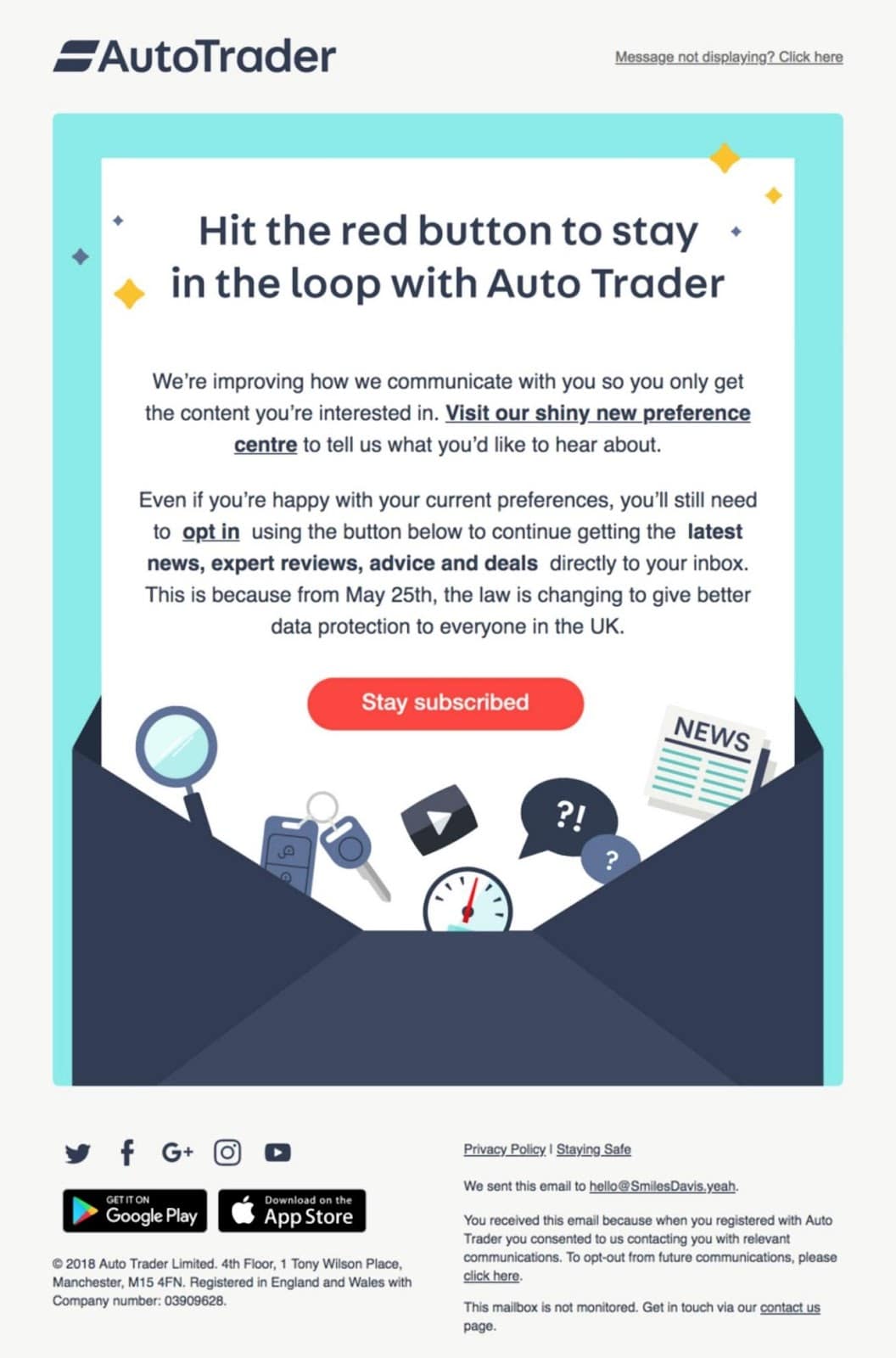
Source: Really Good Emails
Make your campaigns accessible
Millions of people worldwide suffer from an impairment that affects their ability to read or otherwise digest your content. Make sure your emails are accessible to everyone.
What makes an email accessible? Our friends at Campaign Monitor put together a handy list of accessibility requirements just for you.
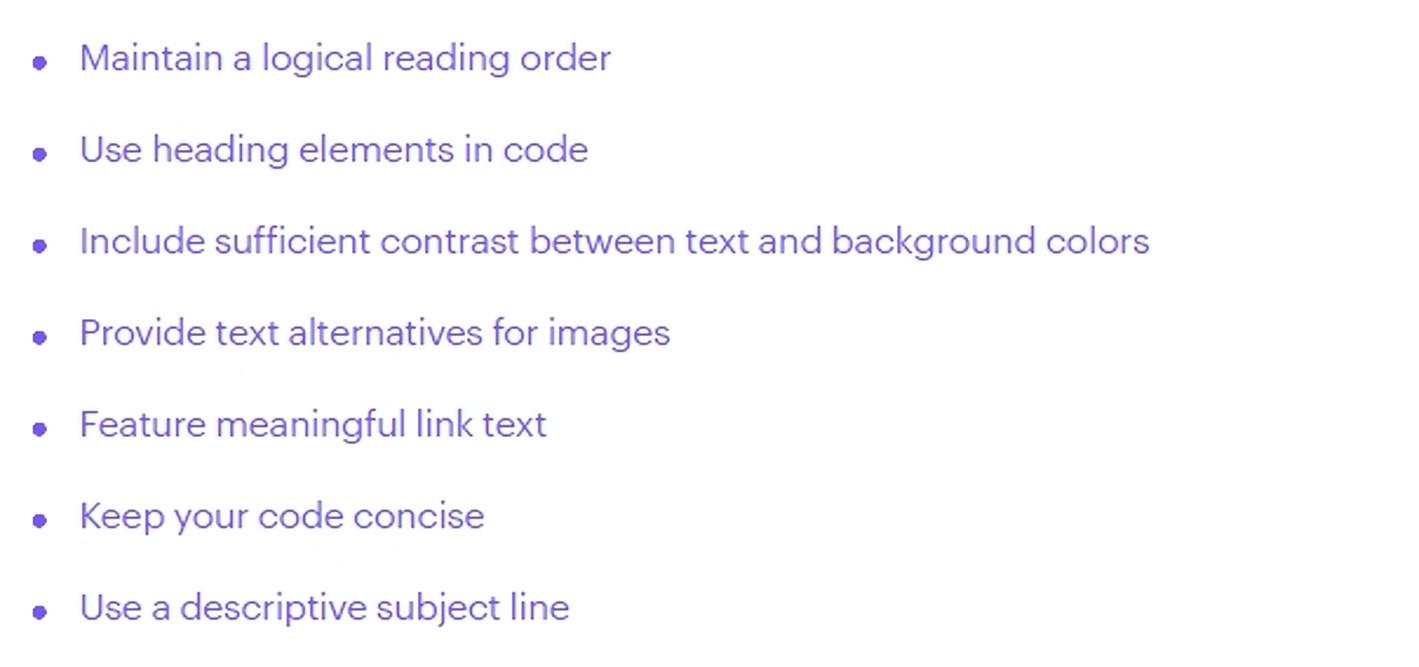
Source: Campaign Monitor
Focus on building relationships
Each workflow should focus on building relationships with your subscribers.
Email communication gives your subscribers one-on-one communication — which isn't possible through many other marketing channels.
Here are some ways to focus on building individual relationships with each reader:
-
Add personalization
-
Segment campaigns for relevance
-
Create highly targeted campaigns
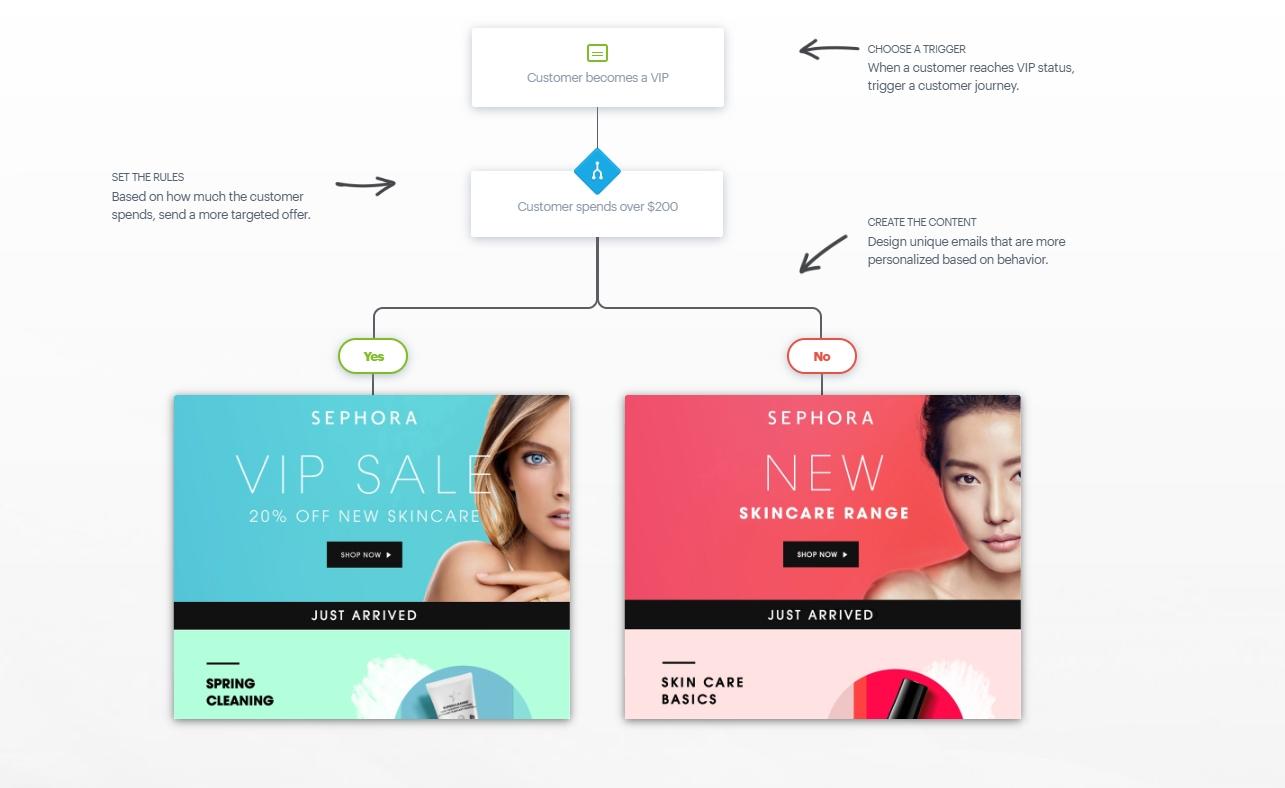
Source: Campaign Monitor
Types of email automation workflows you should use
An automated welcome email is great for thanking new subscribers, but that’s just the tip of the email automation workflow iceberg. There are dozens of different trigger emails that help simplify your communication efforts and ensure your brand stands out in crowded inboxes.
Data-based emails
While many of your email automation workflows will rely on your subscriber’s actions and behaviors, data-based email automations are just as important to include in your toolbox. Data-based emails typically utilize information like a subscriber’s birthday or join date (to celebrate a particular milestone).
These automated emails are excellent because they show your readers you’re paying careful attention to them. They’re also an excellent way to build your relationship with each customer further.
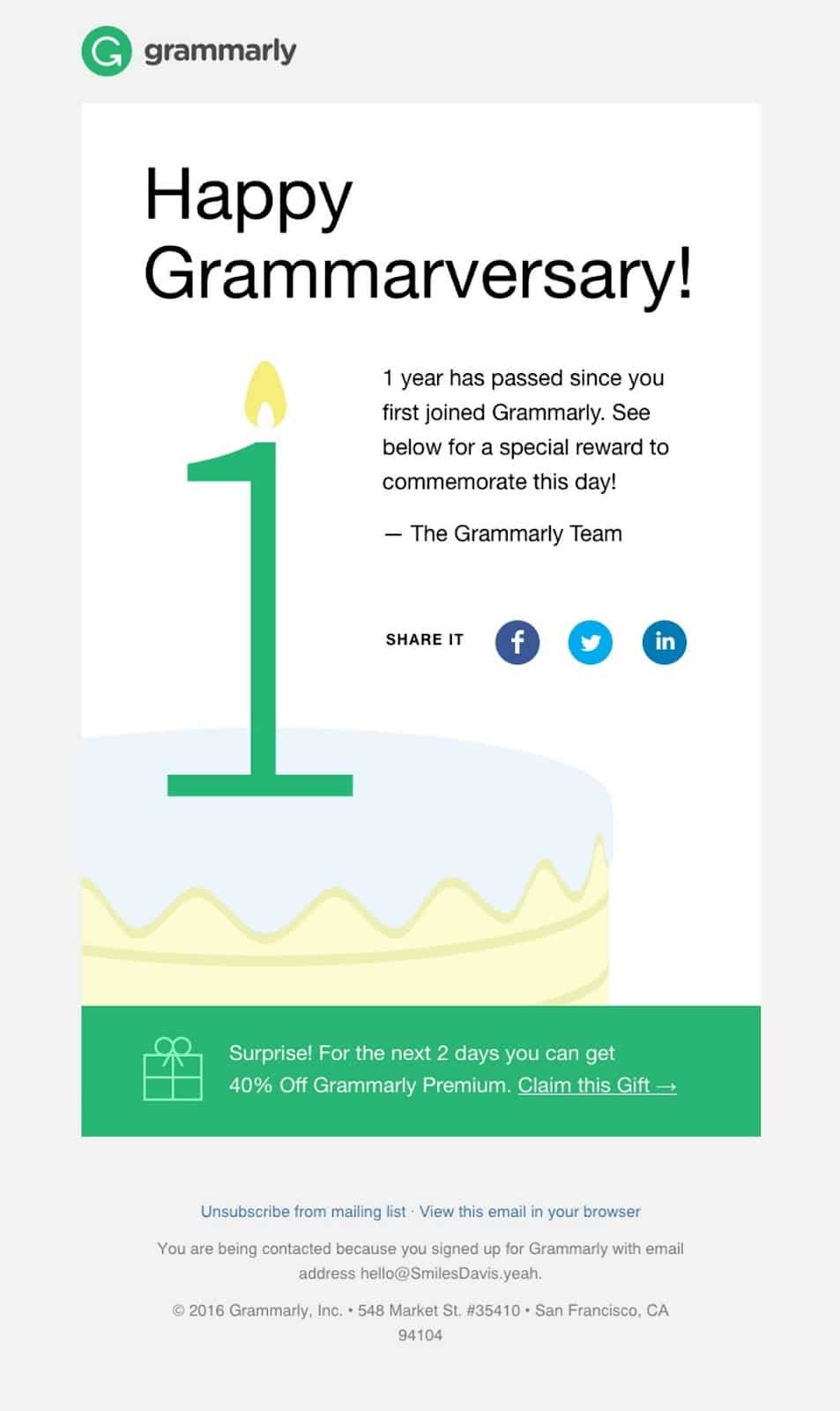
Source: Really Good Emails
Reactivation emails
As a marketing professional, you already understand how vital reactivation or re-engagement emails are to retain your subscribers. When a subscriber goes inactive, it’s always more cost-effective to try and re-engage them than it is to try and replace them.
Reactivation emails can be set up as part of an email automation workflow by defining a time-based trigger.
For example, if a subscriber goes six months without engaging with your emails, try sending a reactivation message — like the below example from Prezi. Their email is designed simply to capture the reader’s attention and get them interacting once again.
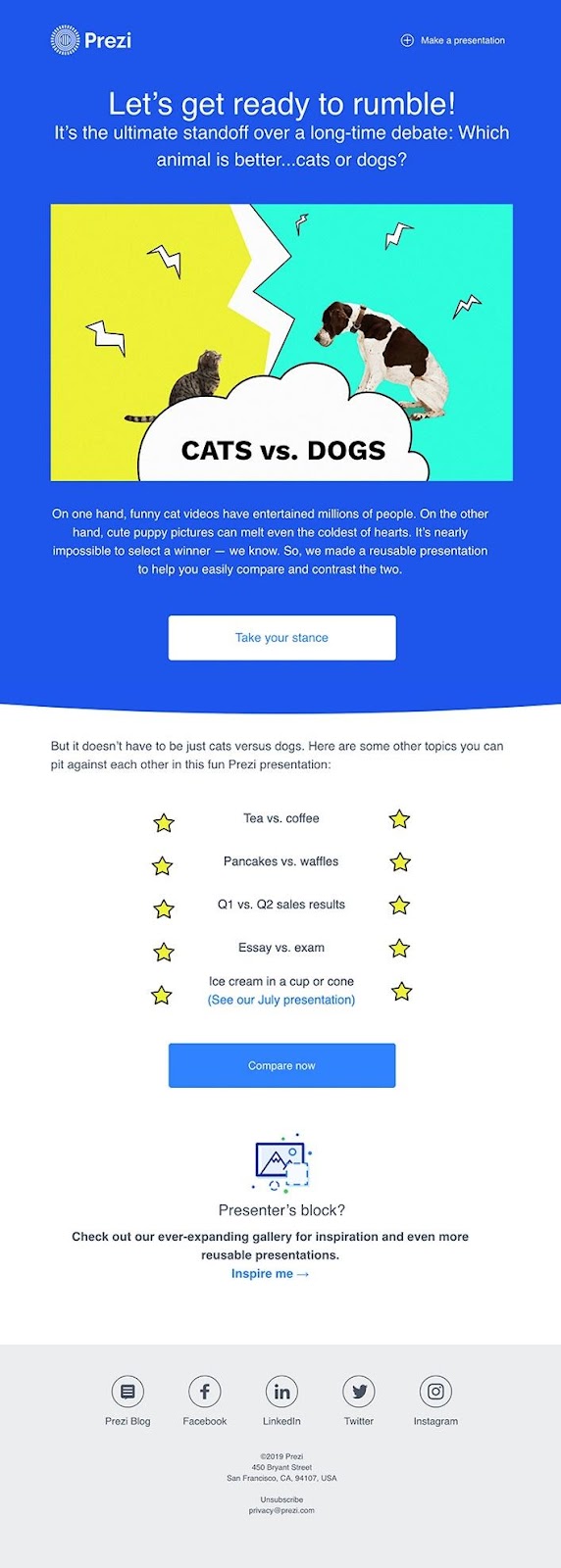
Source: Really Good Emails
Abandoned cart emails
Abandoned cart emails are another great example of an email automation workflow that you should be using, especially if your primary focus is e-commerce. In 2019, abandoned cart emails received an average open rate of over 43% and an average conversion rate of more than 8%.
Remember, these emails should be designed as helpful reminders. They shouldn’t be pushy — that’s a surefire way to get marked as spam.
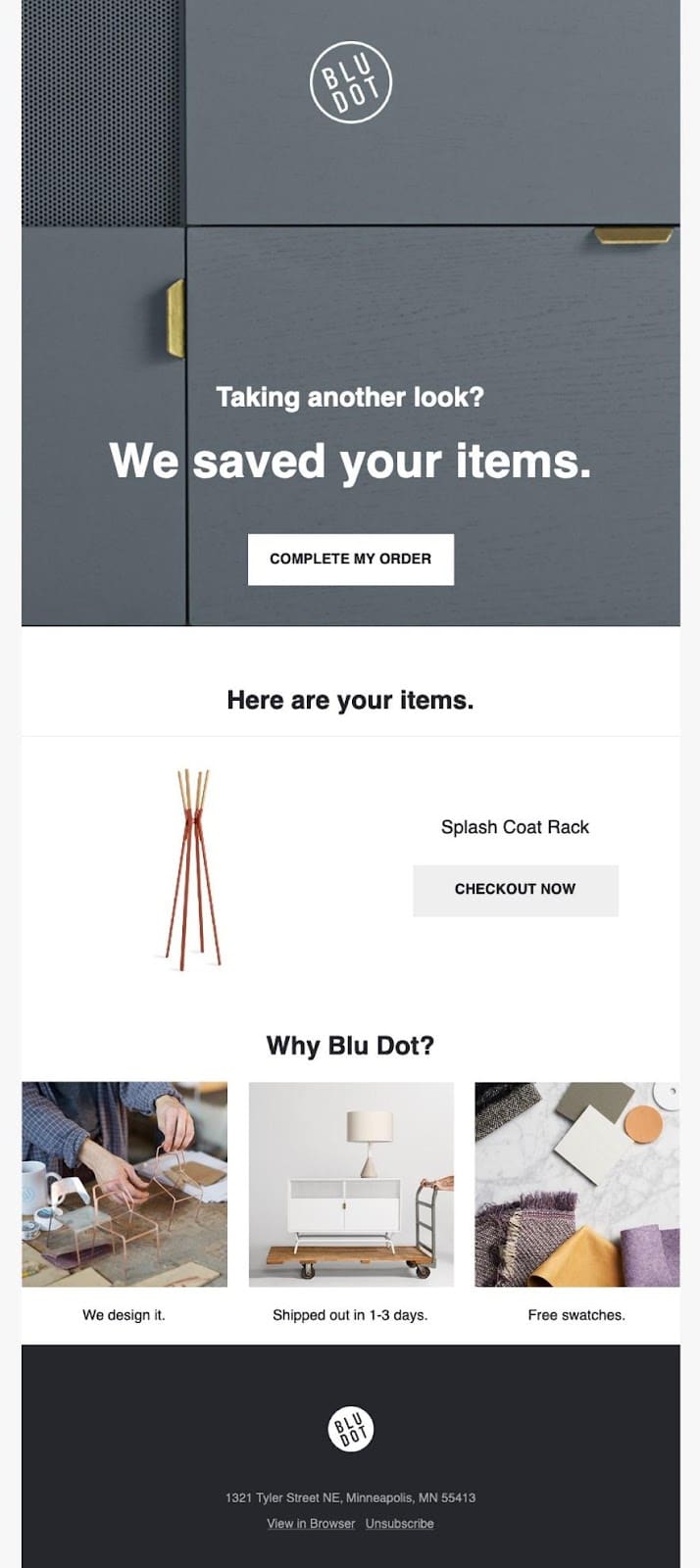
Source: Really Good Emails
Setting up email automation workflows in 5 easy steps
If you’re considering email automation workflows, then your team is probably working with software that provides you with this tool.
While each marketing software will have slightly different methods, the steps to setting up a workflow are all relatively similar.
We’ll use Emma’s email marketing software to show you how it’s done.
1. Plan it out
Before you start building your email automation workflow, lay it all out on paper. While this may seem like a tedious extra step, it’ll help you finalize the process before you start doing the real work.
Beginning with pen and paper, chart each step of your workflow and see how it aligns with the campaign’s goals — some examples are lead generation, conversions, or building brand awareness.
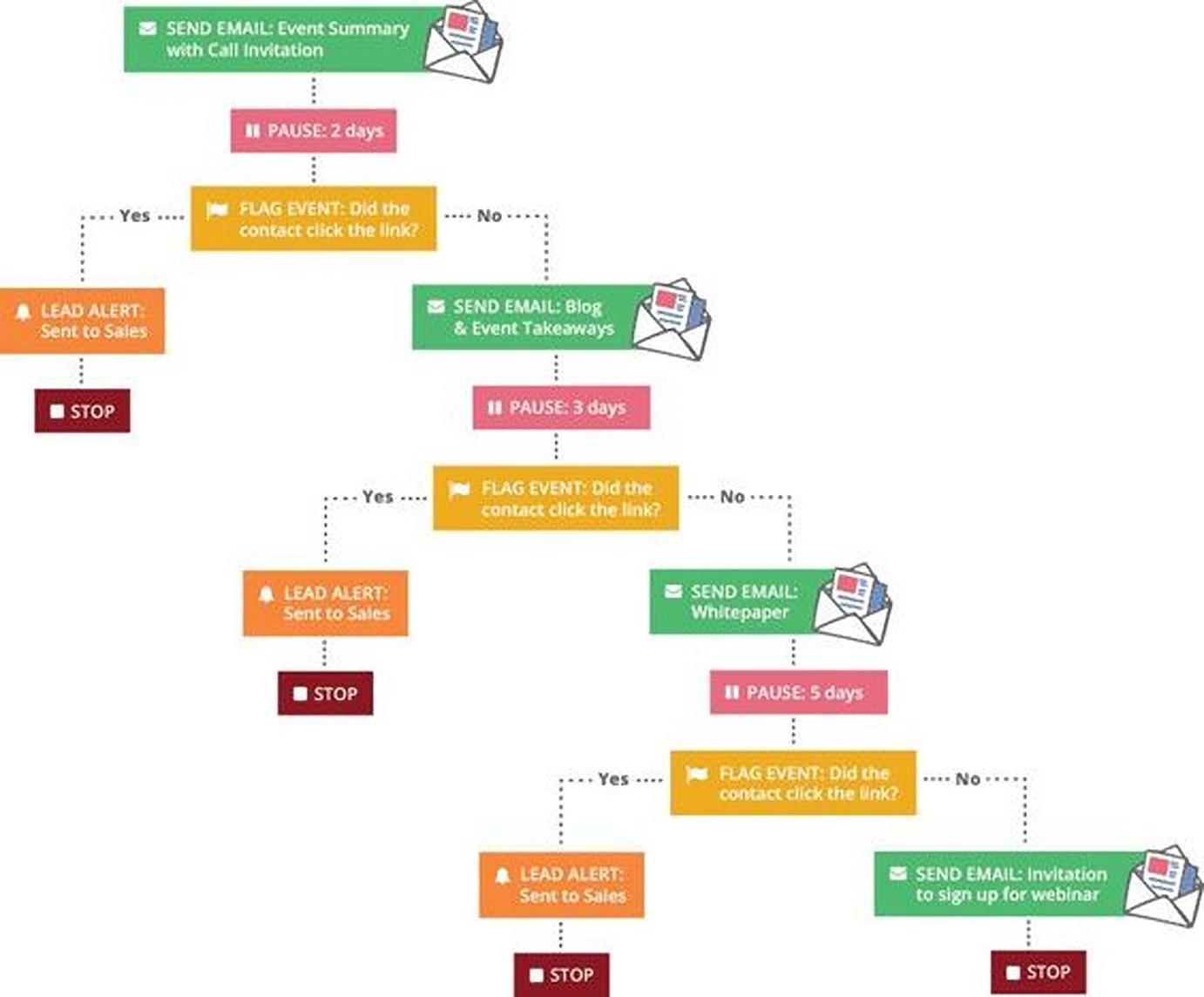
Source: Delivra
2. Create a new workflow
Once you’ve got your plan ready, it’s time to get to work. Start by creating a new workflow. For those using Emma’s software, go to the “Automation” tab and click the “Create a new workflow” button.
Once you’ve initiated the process, name your workflow and choose the audience this particular email automation workflow will apply to.
3. Choose your trigger event
Once you’ve defined the above information, then you can choose the trigger event to initiate the first email. Trigger events will typically include:
-
Sign up: When someone new signs up through a form or other integration
-
Date based: A specific date stored in a contact’s record
-
Field change: When your user changes information within their record
-
Link click: When someone clicks a specific link in your campaign
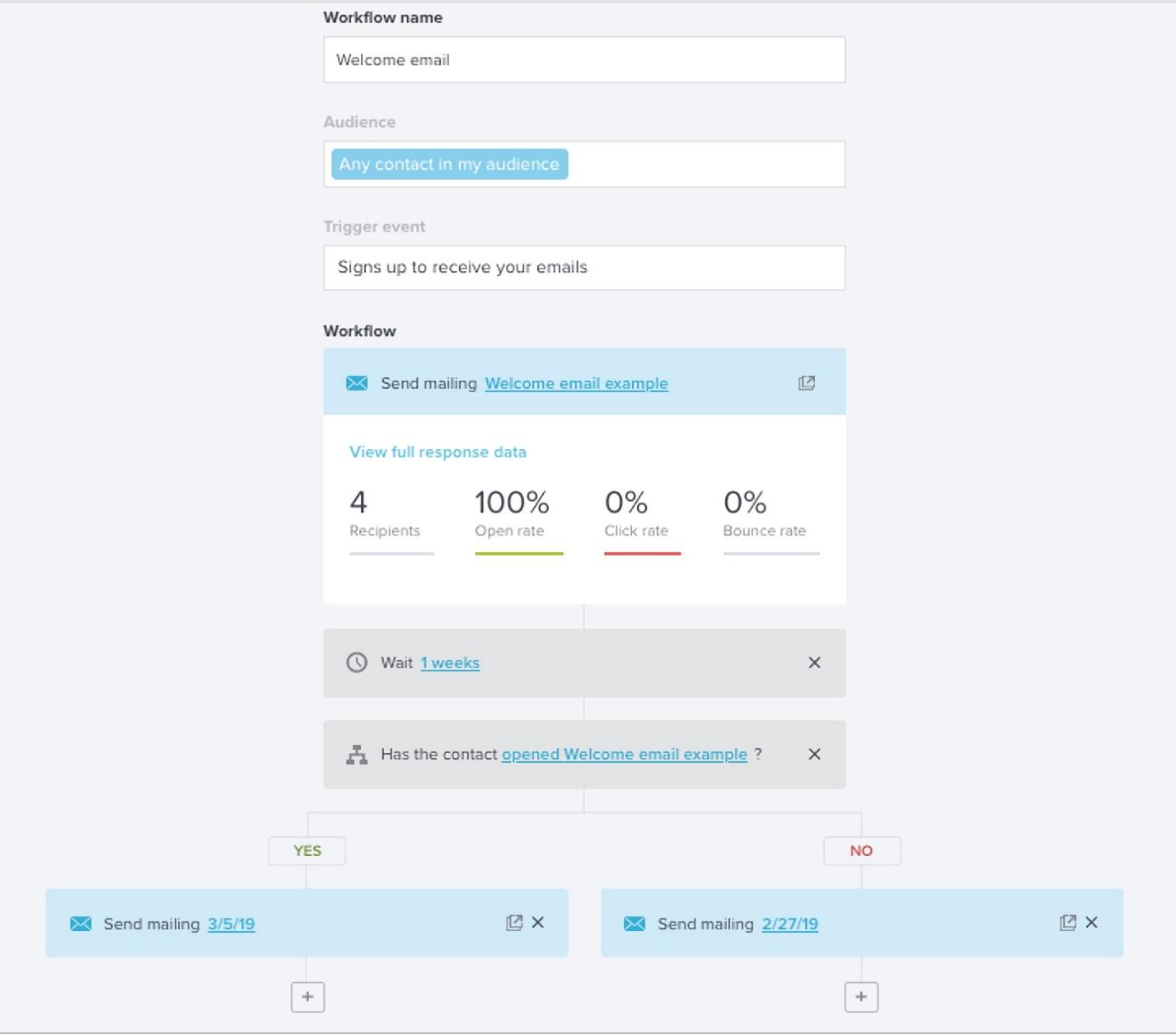
Source: Emma
Depending on the email automation workflow you’re completing, you may choose to finalize your workflow here. If that’s the case, you can skip to step five.
However, if this is a multiple email automation workflow, then move to step four.
4. Adding workflow branches
Once a subscriber enters a multi-step workflow, you’ll need to add branches to define the next steps in the process.
Depending on your available options, you may decide to include a wait step that allows subscribers time to interact with your message. Then, you can add a branch that segments your subscribers into those who interacted and those who didn’t. Those who did may be sent a simple confirmation, while those who didn’t may be sent a follow-up offer.
5. Activate your workflow
Finally, once you’ve completed your email automation workflow, you’ll need to activate it. This may be as simple as clicking “activate workflow” or “save workflow.”
Wrap up
Email automation workflows help you stay organized and send the right email to your readers. Most of all, they help keep your brand relevant and your subscribers engaged.
A few examples of email automation workflows that you should be using include:
-
Data-based emails
-
Reactivation emails
-
Abandoned cart emails
Ready to get started with email automation workflows? Schedule your live demo today.
MOST RECENT ARTICLES
Want to engage your audience and grow your brand? Try Emma's robust easy-to-use product today.












